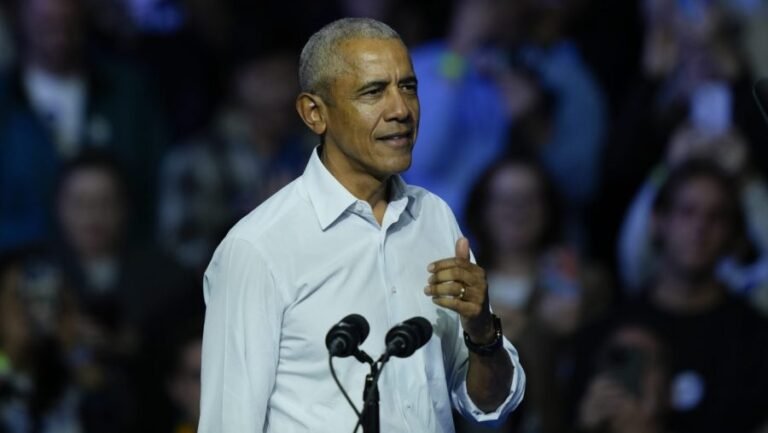
House Republicans on Thursday adopted the Senate’s framework that will be used to enact key parts of President Trump’s legislative agenda, getting the blueprint across the finish line after a last-minute scramble to win over conservatives who had spent days railing against the measure.
The largely party line 216-214 vote marks a big win for Speaker Mike Johnson (R-La.), who has pushed an aggressive timeline to advance Trump’s domestic policy priorities, and Trump, who endorsed the legislation and lobbied those on the right flank to get on board.
Only two Republicans — Reps. Thomas Massie (Ky.) and Victoria Spartz (Ind.) — voted against the measure.
It was not, however, an easy path to victory for the GOP leadership. More than a dozen hard-line House conservatives had come out against the Senate resolution, vowing to vote against the legislation if it came to the floor out of concern over the level of spending cuts mandated in the measure.
That opposition forced Johnson yank a planned vote on the measure Wednesday night. As leadership held open an unrelated vote for almost 90 minutes, Johnson huddled in a room off the House floor with several of the conservative holdouts in an unsuccessful attempt to secure their support — prompting the delay.
The linchpin in leadership’s effort appeared to be a joint press appearance Thursday morning by Johnson and Senate Majority Leader John Thune (R-S.D.), where the pair delivered brief remarks regarding spending cuts. The hard-liners were incensed that the budget resolution directed Senate committees to find far fewer spending cuts than House panels — at least $1.5 trillion, compared to at least $4 billion — worried that the upper chamber would reign supreme.
During their remarks, Johnson committed to including at least $1.5 trillion in cuts, while Thune said the Senate was “aligned with the House in terms of what their budget resolution outlined in terms of savings” — stopping short of a firm commitment, but sounding encouraging enough to House hard-liners to get them on board.
“The first time publicly, the Senate leader has come out and actually said that we’re in the same ballpark with the House and Senate reductions,” Rep. Andy Harris (R-Md.), the chair of the conservative House Freedom Caucus, told The Hill. “Obviously, we were happy with the House spending reduction because we all voted for it, so I think that’s a step in a positive direction.”
Still, passage remained far from a sure thing. Though members of the Freedom Caucus expressed cautious optimism, a group continued to meet even as the vote took place on the floor. Johnson, at the same time, huddled on the floor with moderate Republicans who had expressed unease about the effects of severe spending cuts.
And Rep. Derrick Van Orden (R-Wis.) briefly voted in opposition — bringing the total number of “no” votes to three, the maximum Johnson could afford to lose — before switching to “yes.”
He said his vote was a “shot over the bow” at the House Freedom Caucus over his frustration with the dragged-out negotiations.
“I will personally sabotage every single thing the Freedom Caucus does, until they get their mind right,” he said.
The successful vote puts a bookend on the first phase of the budget reconciliation process, which Republicans are hoping to use to advance Trump’s domestic policy priorities. The initial part of the procedure requires both chambers adopting a resolution, which acts as instructions for the rest of the process.
Now, however, the even tougher part begins. Republicans in both chambers must craft a package that is in line with the levels laid out in the budget resolution and make decisions on a number of hot-button issues such as spending cuts, how long the tax cuts are extended for and the cap on the state and local tax deduction, among other details.
Emily Brooks contributed.


